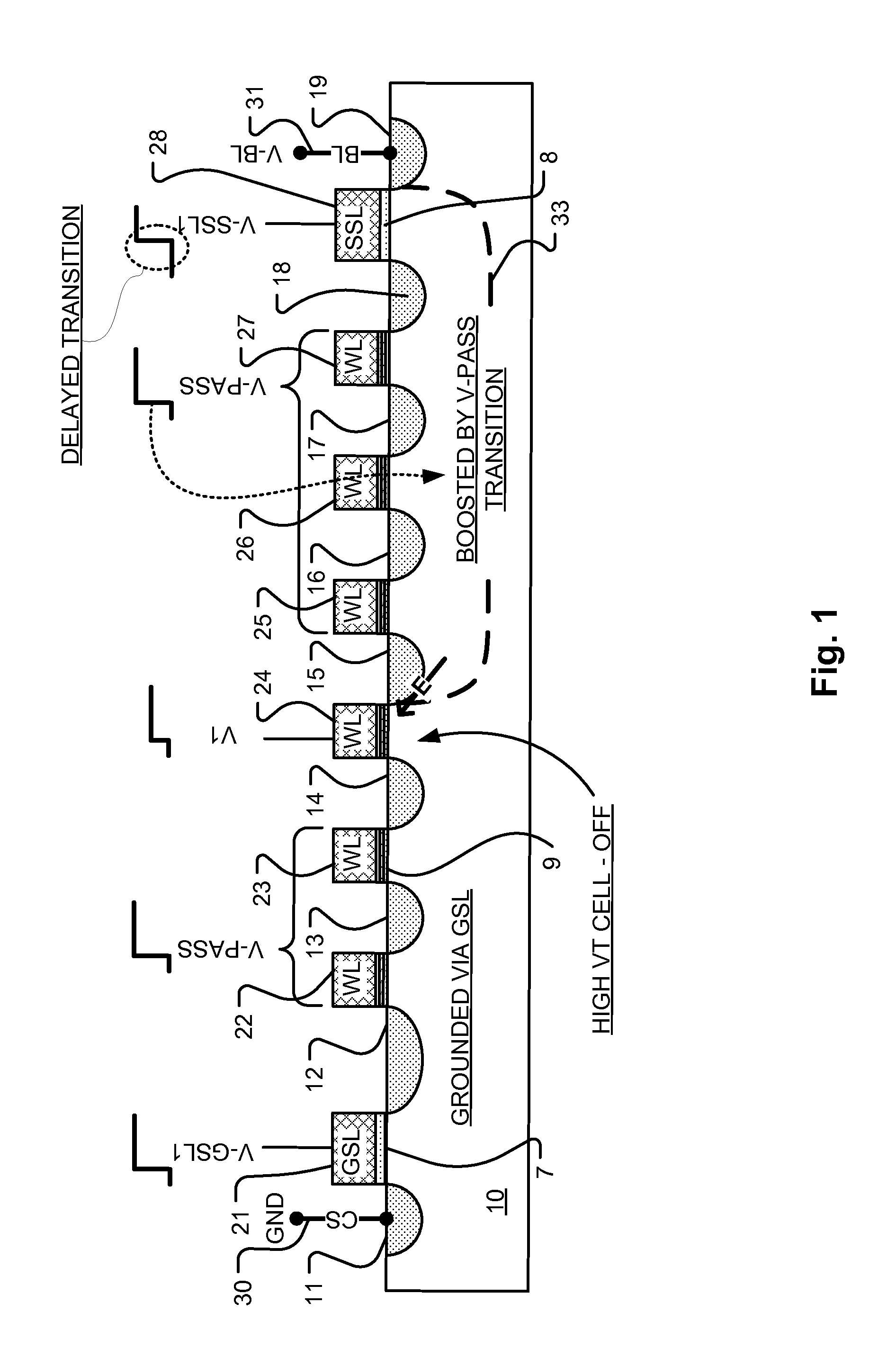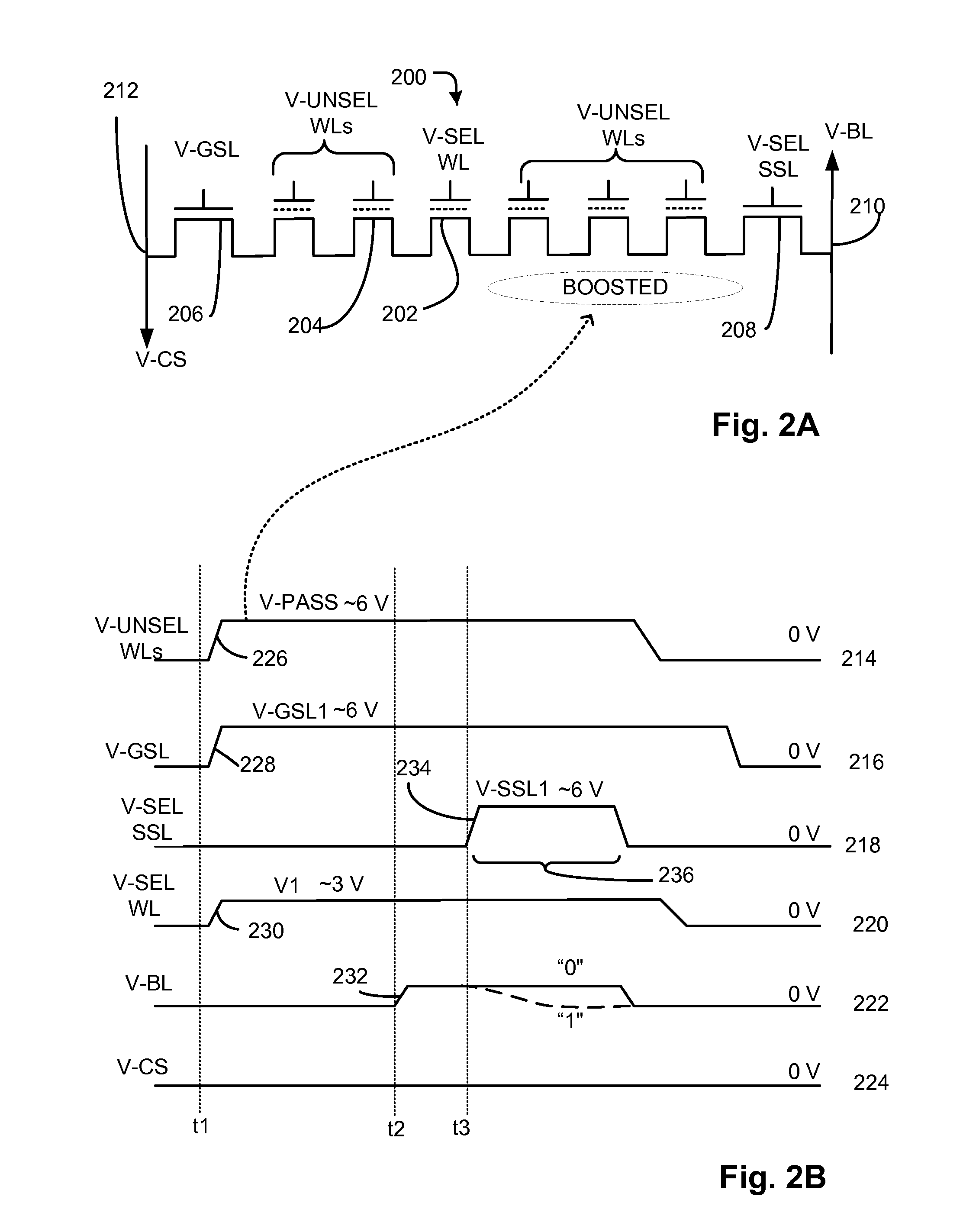NAND flash biasing operation
a biasing operation and flash memory technology, applied in the field of flash memory technology, can solve problems such as unwanted charge tunneling into cells, reducing, and arising from charge retention
- Summary
- Abstract
- Description
- Claims
- Application Information
AI Technical Summary
Benefits of technology
Problems solved by technology
Method used
Image
Examples
Embodiment Construction
[0034]A detailed description of embodiments of the present invention is provided with reference to FIGS. 1-14.
[0035]FIG. 1 is a simplified cross-sectional view of a selected NAND string that shows a bias arrangement. The NAND string includes a plurality of flash memory cells that are arranged in series. Another technology for implementation of NAND flash using bandgap engineered SONOS (BE-SONOS) charge trapping technology is described in U.S. Pat. No. 7,315,474 by Lue, which is incorporated by reference as if fully set forth herein. NAND strings can be implemented in a variety of configurations, including finFET technology, shallow trench isolation technology, vertical NAND technology and others. Yet another 3D NAND architecture is described in co-pending U.S. patent application Ser. No. 13 / 239,760 (now U.S. Patent Publication No. 2012-0182802) entitled “Memory Architecture of 3D Array With Improved Uniformity of Bit Line Capacitances” which application is incorporated by reference ...
PUM
 Login to View More
Login to View More Abstract
Description
Claims
Application Information
 Login to View More
Login to View More - R&D
- Intellectual Property
- Life Sciences
- Materials
- Tech Scout
- Unparalleled Data Quality
- Higher Quality Content
- 60% Fewer Hallucinations
Browse by: Latest US Patents, China's latest patents, Technical Efficacy Thesaurus, Application Domain, Technology Topic, Popular Technical Reports.
© 2025 PatSnap. All rights reserved.Legal|Privacy policy|Modern Slavery Act Transparency Statement|Sitemap|About US| Contact US: help@patsnap.com



